Navy
Latest

Facebook group hosted naked photos of women soldiers
Private Facebook groups can be valuable discussion areas for like-minded people, but they can also promote toxic behavior in the wrong circumstances. The Center for Investigative Reporting has revealed that the US' Naval Criminal Investigative Service is looking into a Facebook group, Marines United, that was used by soldiers in the US and UK (including the Marine Corps, Navy Corpsman and Royal Marines) to share naked photos of servicewomen. While the group has had some above-board discussions, according to one anonymous veteran, it has been dominated by "creepy, stalker-like" photography, revenge porn and the vile talk to match. Over two dozen of the women were identified by their names and positions.

DARPA's SideArm system snares drones from mid-air
Even the longest-loitering drone needs to land sometime. But rather than risk damaging these multi-million dollar aircraft on improvised battlefield landing strips or aboard US Naval vessels, DARPA is developing a novel drone recovery system that snatches them out of mid-air.

US Navy decommissions the first nuclear-powered aircraft carrier
It's the end of an era for the US sea power, in more ways than one: the Navy has decommissioned the USS Enterprise (CVN-65), the world's first nuclear-powered aircraft carrier. The vessel launched in 1961 and is mainly known for playing a pivotal role in several major incidents and conflicts, including the Cuban Missile Crisis, the Vietnam War and the 2003 Iraq War. However, it also served as the quintessential showcase for what nuclear ships could do. Its eight reactors let it run for years at a time, all the while making more room for the aircraft and their fuel.
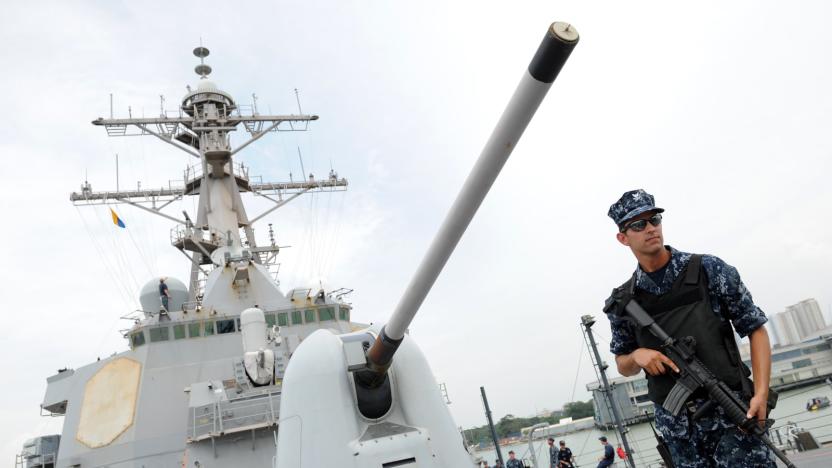
Smart bullets will help warships fend off drone swarms
Navies already have a lot to worry about between rival warships and aircraft, but it's only going to get worse when drone swarms of all kinds threaten to overwhelm their defenses. The US Navy might not have that problem, though: DARPA just tapped Raytheon for the second phase of a smart bullet development project that will help fight off swarming attacks. The MAD-FIRES project (Multi Azimuth Defense Fast Intercept Round Engagement System) should lead to ammo that's as fast and small as what you'd find in a medium-caliber gun (20- to 40-caliber), but with the guidance of a missile. if a horde of robotic flyers appeared, a vessel could theoretically take all of them out even if they're approaching from different directions.
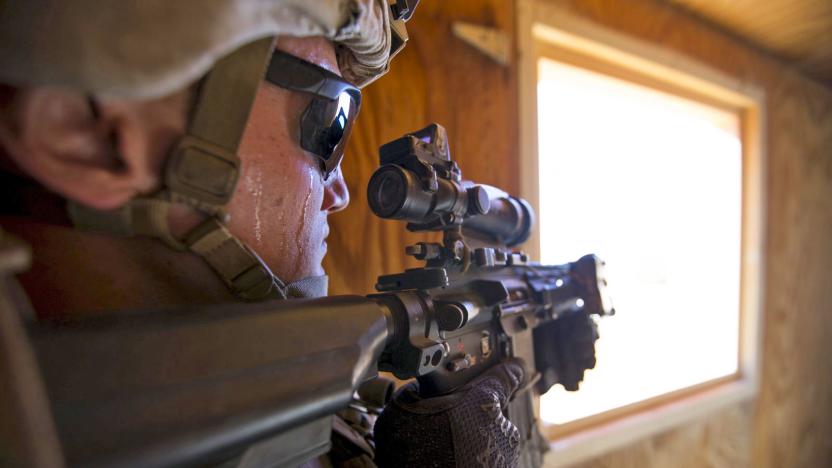
Smart body armor could gauge brain damage from explosions
Explosions are insidious. Even if a blast doesn't deliver a conspicuous injury, it can inflict brain trauma that might not be evident until much later. The US Navy's Office of Naval Research doesn't want medics to wait, though. It's developing Blast Load Assessment Sense and Test (conveniently, BLAST), a sensor system that could determine whether or not an explosion's shockwave is likely to have injured your brain. Tiny sensors in your helmet and body armor would record the blast pressure and share it with a scanner. When combined with a palm-sized neurological assessment tool (which stimulates your fingers to gauge your responses), the data would let medical teams quickly decide whether or not you're able to fight.

DoD shows off its first successful micro-drone swarm launch
The US military is no stranger to drone development. Over the past few years we've seen everything from unhackable robot helicopters to harbor-defending pontoon platoons -- including the the means to combat them -- come out of DoD research efforts. On Tuesday, the DoD showed off its latest advancement in drone technology when it released video of the first successful aerial deployment of the Perdix swarm drone.
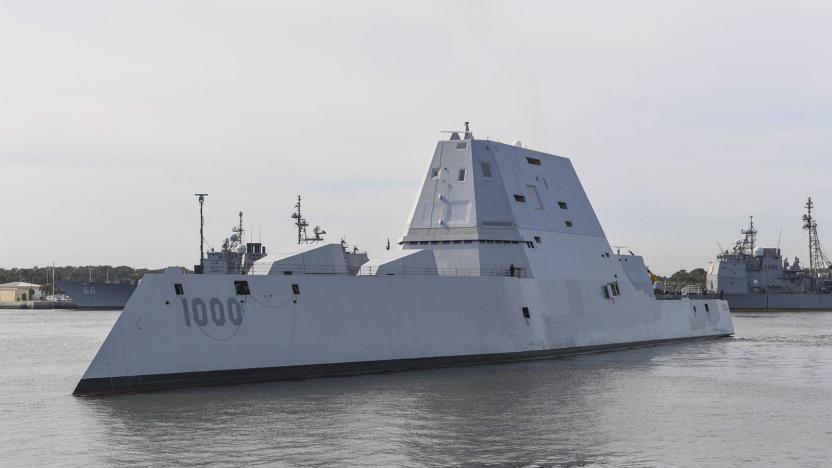
US' new stealth destroyer may finally have affordable ammo
To put it mildly, the US screwed up when it decided to carry on with its Zumwalt-class stealth destroyers when they depended on smart ammo the Navy couldn't afford. However, it might have a clever workaround. Officials speaking to USNI News say the Navy is looking at Raytheon's Excalibur, a GPS-guided artillery round, as a substitute for the custom LRLAP (Long Range Land Attack Projectile) shells the Zumwalt's main guns were designed to use. Excalibur has roughly half the range at about 30 miles, but it costs much less -- about a quarter of the $800,000-plus cost per round of LRLAP. It can also hit moving targets where LRLAP couldn't.

The Navy's $4 billion stealth destroyer has malfunctioned again
The US Navy hasn't exactly been having the best of luck with its pricey new ship. Only weeks after it was officially commissioned the USS Zumwalt, the Navy's new $4.4 billion destroyer has already been put out of action.

Navy leaks personal data for over 130,000 sailors
Another day, another data breach. While everyone is focused on pre-holiday activities, the Navy reveals that it was notified by Hewlett Packard Enterprise in October about a compromised laptop. Now, an investigation has determined that names and social security numbers of 134,386 current and former sailors had been accessed by unknown individuals. Other than dumping the news out while few are paying attention, the Navy says it will notify those affected "in the coming weeks," by phone, letter and email.
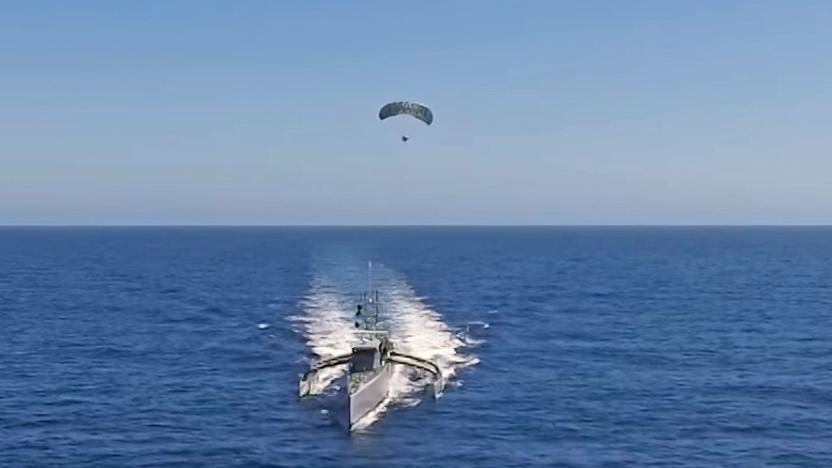
DARPA tests parasailing radar with its robotic boat
If you want a vision of what naval battles could look like in the near future, you just got it. DARPA has tested a parasailing radar array (part of its Towed Airborne Lift of Naval Systems project, or TALONS) using its robotic ACTUV boat as a nest. The array flew up to 1,000 feet, where its sensors were far more effective than they'd be at ship level. Its surface tracking radar had six times the range, and even a handheld radio covered three times its usual distance. The combination could lead to unmanned warships that not only travel for months on end, but can easily detect potential threats before they're in firing range.

Gene-modified soil bacteria promise eco-friendly computing
You normally need non-renewable elements or minerals to create nanowires. However, the US Navy's Office of Naval Research may have a better solution: the life living in the dirt under your feet. Its sponsored researchers have crafted nanowires from genetically modified Geobacter, a bacteria you find in soil just about everywhere on Earth. The team altered the bacteria so that it would replace amino acids with tryptophan, which is a much better electrical conductor (2,000 times) at the nanoscopic scale. String enough of those bacteria together and you suddenly have wiring that's virtually invisible to the human eye. They wires are tougher and smaller, too, so they stand a better chance of surviving inside electronics.
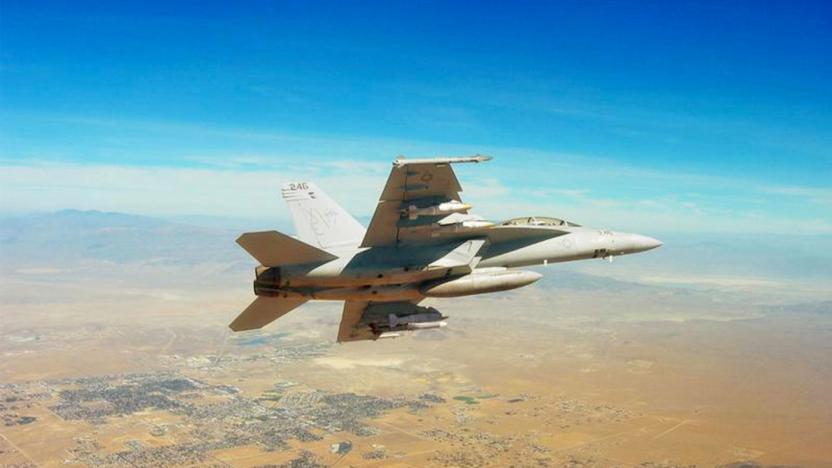
Secret military tests in California could affect planes' GPS
This June, the military is conducting experiments at the Naval Air Weapons Center in the Mojave Desert that could affect planes' GPS, the FAA warned pilots. What kind of tests? Well, we don't exactly know. The Notice to Airmen (NOTAM) only described it as "GPS Interference Testing" and didn't go into details -- the Weapons Center also refused to reveal anything to Gizmodo, telling the publication that it's "general testing for [their] ranges."

The US Navy just put a futuristic HUD in a diving helmet
Augmented reality (technology that uses screen-embedded eyewear to overlay the real world with information, images and more) isn't quite ready for mainstream consumers -- but it's almost ready for the diving community. The US Navy says it's developing a high-resolution, heads-up display embedded in a diving helmet. It's called The Divers Augmented Reality Display, or DAVD for short.
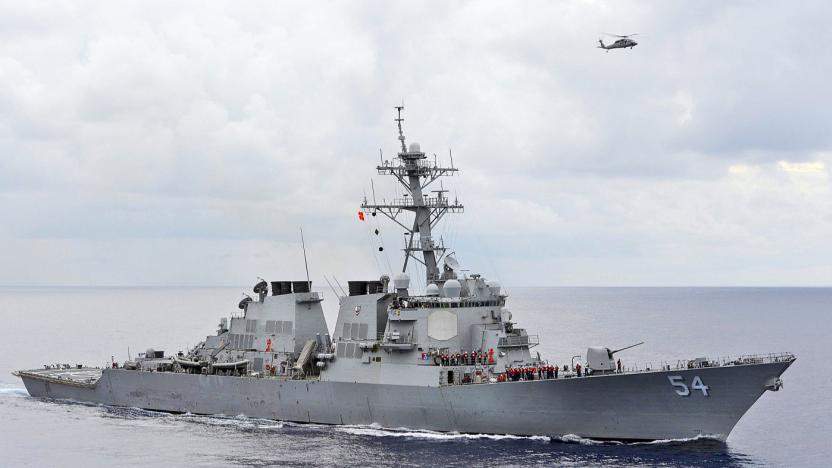
The Navy's new cloud network forms a tactical 'kill web'
The US Navy is deploying a "tactical cloud" network that will tie together targeting data acquired from a range of sources in the sea, sky and space to form a lethal "kill web," the U.S. Naval Institute reports this week. The network will essentially allow any aircraft, ship or submarine to draw targeting information from any other instrument in the cloud and extend their own range when launching weapons against surface targets.

Emily is a tough, remote-controlled robotic lifeguard
Attention Dwayne Johnson: it's not too late to make your version of Baywatch more apt for this generation. May we suggest casting Emily -- a 25-pound, remote-controlled robotic lifeguard that can travel up to 22 mph. It might not have biceps and legs to die for, but it has already rescued tons of people, including 300 Syrian refugees off the Greek island of Lesbos. The machine's name stands for Emergency Integrated Lifesaving Lanyard, and it's the product of a collaboration between the Navy and Tony Mulligan, the CEO of maritime robotic company Hydronalix.

DARPA wants a military drone that can land on small ships
For the longest time, the US Navy has conducted surveillance and reconnaissance missions by launching planes from large aircraft carriers. Those vessels are expensive though, so the Office of Naval Research and DARPA are working on a long-endurance drone that can launch from small ships instead. Project TERN (Tactically Exploited Reconnaissance Node) has now entered phase three, meaning the initial designs are complete and the team is ready to build its first prototype. It's being developed for $93 million by Northrop Grumman, a defense contractor with plenty of experience building nightmare-inducing military assets.

The US Navy wants to buy unpatched security flaws
It won't surprise you to hear that governments are eager to buy unpatched security exploits for the sake of cyberdefense or surveillance, but they're rarely overt about it. No one must have told that to the US Navy until this week, however. The Electronic Frontier Foundation caught the military branch soliciting for both zero-day exploits and recently discovered vulnerabilities (less than six months old) for relatively common software from the likes of Apple, Google and Microsoft. The Navy quickly took the posting down, but it was clear the organization wanted to turn these flaws into "exploit binaries" -- that is, finished software that would be useful for attacks.

Navy AR goggles turn a golf course into a battleground
Marines on a sunny golf course in Quantico, Virginia, this week demonstrated a pair of augmented reality glasses that simulate combat scenarios. The Office of Naval Research recently completed development of the goggles and this week hooked them up to a larger training system known as the Augmented Immersive Team Trainer for the first time. Representatives from the Army, Navy and Marine Corps showed up at Marine Corps Base Quantico to see the AITT in action. The AR glasses themselves have a wider field of view than similar products on the commercial market, and the full AITT experience incorporates real-life weapons props, binoculars and other physical equipment necessary in a potential combat zone. "For Marines, this system increases their situational awareness, whether for training or operations, giving them a wider aperture for information to help make better decisions," ONR action officer Le Nolan said.

Watch how the Navy plans to deploy its tiny Cicada drones
Cicada, the Navy's palm-sized, sensor-laden drone, has no propeller or engine. In fact, it looks like a child's plaything. So, how will they get to their destination? Well, the Navy plans to drop them from either a balloon or a bigger drone -- in this case, its testers used both. During a 2011 demo and test flight in Yuma, Arizona, the Navy attached Cicadas to the wings of bigger drones, which were, in turn, attached to balloons. Once the balloons reached 57,000 feet, they let go of the big drones, which flew until they were within 15 feet of the Cicadas' landing locations. The tiny drones then dropped and glided to their landing spot, thanks to their preprogrammed GPS coordinates. In all, the Navy did eight rounds of testing that day in Yuma, and you can watch one of the drops in action below the fold.

The US Navy wants to protect its drones against hacks
Cyberwarfare is bad enough by itself, but it's especially dangerous when military drones are involved. The last thing you want is a hijacked UAV that can give away your position or, worse, fire on your own troops. To that end, the US Navy is asking private companies for help with developing technology that protects drones, missiles and other airborne weapons against hacks. Whoever has the best proposal will (hopefully) craft systems that not only prevent enemies from getting in, but bounce back quickly if the worst happens.







